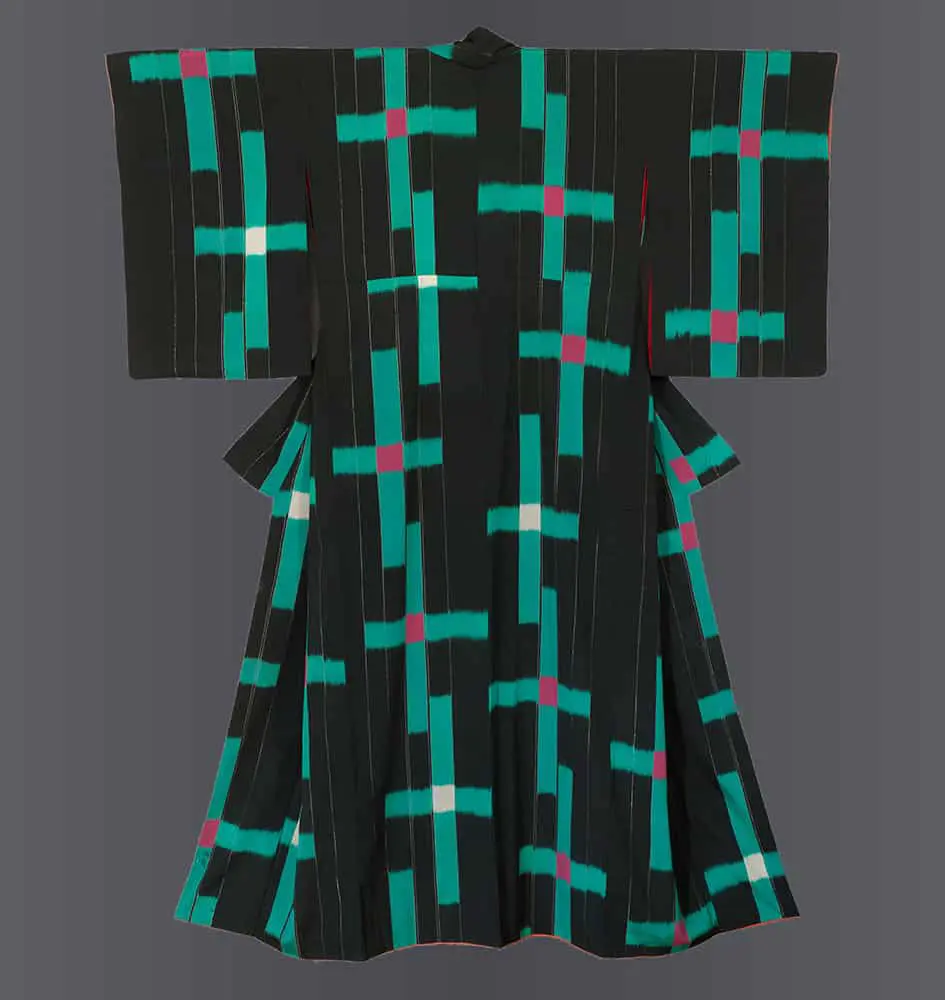The garment is a striking example of Omeshi silk, a high-status textile traditionally valued for its rich, heavy drape and crepe-like texture. However, the design is a radical departure from tradition, functioning as a wearable manifesto of Constructivism and Art Deco.
The design rejects the organic curves of nature in favor of a rigid, architectural abstraction. The motif consists of colossal, deconstructed cross-forms (resembling a stylized igeta or well-curb) rendered in electric teal and magenta against a stark black ground. The genius of this textile lies in its "faux-ikat" execution. While the pattern appears to have the blurred, "fuzzy" edges characteristic of hand-tied kasuri (ikat), this effect is achieved through the precise engineering of the Omeshi weave. The threads are pre-dyed to exact calculations so that when woven, the colors bleed into one another in a controlled, vibrating rhythm.
Crucially, the silver metallic thread warps are integrated into the structure of the fabric itself. These thin, vertical silver pinstripes run through the black ground, catching the light with a subtle, industrial glimmer. This integration serves an artistic purpose: it mimics the steel and chrome aesthetic of the Machine Age, transforming the kimono from a soft garment into a structure of light and line. It is a piece designed for the urban street, mirroring the neon and grid of the modernizing city.
The red inner doura is hand-spun and handwoven, while the orange hakkama (lower inner) is made of kinsha (fine crepe) silk. Its measurements are 50 inches (127 cm) from sleeve-end to sleeve-end and stands at 62 inches (157 cm) in height.
This artwork is featured on page 348 of Art Kimono: Aesthetic Revelations of Japan, 1905-1960. This book, published by Yorke Antique Textiles, can be previewed or purchased on our website here.
This piece also featured on page 96 of the Spring 2022 edition of Arts of Asia.
.avif)













